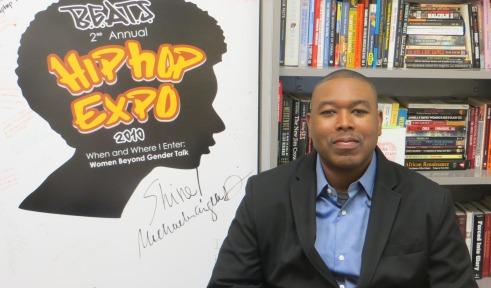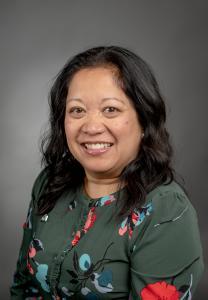News
Ohio University’s New Diversity Plan Seen As Promising, But Real Test Is Delivery
By: Will Price
Posted on:
ATHENS, Ohio (WOUB) — Ohio University’s new diversity plan, more than three years in the making, is filled with ambitious goals, action items and timetables.
Dr. Akil Houston said there’s much to like in the plan. But he feels like he’s seen this before.
Houston, who is Black, is an associate professor of cultural and media studies at Ohio University. He said while the university has come up with great ideas to improve its efforts in diversity and inclusion over the years, he’s concerned about the execution.
“I have attempted to be a part of diversity initiatives, and over the years I have questioned whether or not there is a sincere commitment to actually do these kind of things,” he said.
Houston said he is satisfied with the new Inclusive Excellence Strategic Plan, but the university needs to maintain its commitment to these efforts. He said he believes that OU follows national trends when it comes to its diversity initiatives.

“The efforts at diversity and inclusion [at OU] tends to mirror the political ends of the moment,” Houston said. “There are times when we are very much interested, we want to do this and there are times when we’re not.”
This latest effort comes amid a national reckoning over systemic racism fueled in part by police killings of Black people.
Not long after the murder of George Floyd by a Minneapolis police officer in May 2020, OU announced the creation of a George Floyd Memorial Scholarship. This struck a wrong note with many who felt this did nothing to address the problems students of color have on campus.
“I think when the George Floyd scholarship was created, students were frustrated, to put it mildly,” Houston said. “And a number of Black faculty were also frustrated. So there was the letter that Black faculty wrote.”
The Black faculty association at OU wrote an open letter in June 2020 to Dr. Gigi Secuban, the university’s vice president of diversity and inclusion, and then-President Duane Nellis addressing overall concerns and initiatives they wanted to see at the university. The organization wrote that “the announcement of the George Floyd scholarship demonstrates unwillingness or lack of awareness in how it continues to function as a fountainhead of racial discrimination and insensitivity.”
He said one of the things the university could do to further its commitment is increase funding to its African American studies department.
“The discipline of African American studies is not the same as the Office of Diversity and Inclusion, I want to make that clear,” Houston said. “But what having a strong African American studies department does is it provides a safe haven for students on campus. It’s also a resource.”
Houston also praised efforts by the College of Education during the summer of 2020 to start conversations on campus with panels and roundtables discussing racism.
“I was encouraged by the level of honest engagement in those conversations,” he said. “It’s really looking at how does racism impact our campus? How does it hurt, not just BIPOC [Black, Indigenous, people of color] folk, but white folks as well.”
Students also had input on the new plan.
Betty Miller was president of the NAACP student chapter and the Black Student Organization Coalition. She met with the Office of Diversity and Inclusion several times over last school year to help with the plan.
She said she heard from students who had concerns about the university’s environment.
“I wanted OU to actually be diverse because I’ve talked to a lot of students who belong to marginalized groups and it seems like a lot of OU is tolerable, but it’s not inclusive,” Miller said.
Miller and the rest of the executive board for the NAACP student group researched similar plans for a presentation they gave to the office in the spring.
“We looked up diversity and inclusion strategic plans from seven or eight different universities,” Miller said. “After we did that research, we pulled out what we think would be most effective at OU.”

Several of the points from the presentation seem to be reflected in action items in the plan the university intends to accomplish by the end of the fall semester. This includes plans to “codify a comprehensive process” for responding to racially biased incidents on campus, conducting a campus climate survey to help marginalized groups and establishing a university diversity committee to oversee different initiatives.
Still, Miller believes the university has a ways to go to better the experiences of students like herself.
“At the end of the day, no student wants to come in and have to fight for visibility at OU,” she said. “It took away time from me studying and all that, doing a separate research project with my executive board.”
Secuban said she has been working with different campus groups since she was hired in June 2018 as the university’s first vice president of diversity and inclusion to set the goals of the Inclusive Excellence Strategic Plan. Her office has met with over 30 campus groups and constituencies since spring 2019 to receive feedback and help set some of the goals for the plan.
“I was able to get a lot of feedback from the campus community in terms of where they saw themselves in the diversity and inclusion area on campus and where they felt like Ohio was and where we needed to go,” she said.
One of the university’s goals is to achieve national recognition for its commitment to diversity and inclusion. U.S. News gave Ohio University a 0.27 diversity score on a 0-1 scale in its most recent rankings, which was based on 2019 data.
Secuban said her office will report on the plan each spring, and described it as an ongoing process rather than a typical five-year or 10-year plan.
“We thought it was much more progressive to be able to say we’re going to report on this plan every year,” she said.
Overall, Houston says a shift in the university’s culture can set the stage for change as the plan continues to progress.
“I think we need to be clear that what we need to focus on is our culture, OU’s culture,” he said. “Are we just going to come up with great ideas and not move on them and then be talking about them again or are we really going to say, ‘Alright, what we really need is a culture shift.’”
Miller, who graduated earlier this year, echoed those sentiments.
“If I’m being honest, I had a good time at OU but that’s not because of the faculty. That’s because of other Black students, other Black faculty and my organizations,” she said. “I feel like they need to fund those things that make Black students feel included.”

